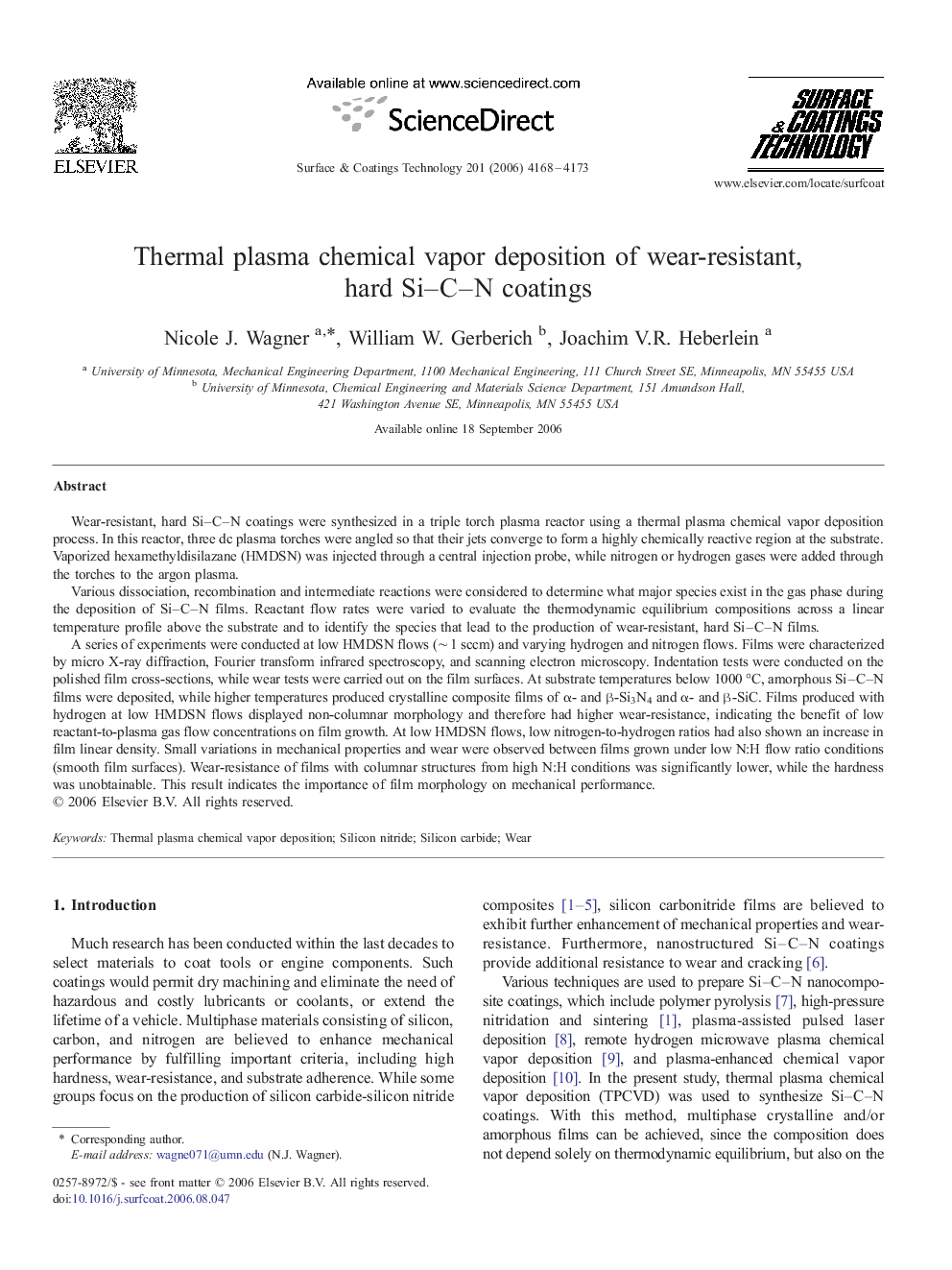| Article ID | Journal | Published Year | Pages | File Type |
|---|---|---|---|---|
| 1663229 | Surface and Coatings Technology | 2006 | 6 Pages |
Wear-resistant, hard Si–C–N coatings were synthesized in a triple torch plasma reactor using a thermal plasma chemical vapor deposition process. In this reactor, three dc plasma torches were angled so that their jets converge to form a highly chemically reactive region at the substrate. Vaporized hexamethyldisilazane (HMDSN) was injected through a central injection probe, while nitrogen or hydrogen gases were added through the torches to the argon plasma.Various dissociation, recombination and intermediate reactions were considered to determine what major species exist in the gas phase during the deposition of Si–C–N films. Reactant flow rates were varied to evaluate the thermodynamic equilibrium compositions across a linear temperature profile above the substrate and to identify the species that lead to the production of wear-resistant, hard Si–C–N films.A series of experiments were conducted at low HMDSN flows (∼ 1 sccm) and varying hydrogen and nitrogen flows. Films were characterized by micro X-ray diffraction, Fourier transform infrared spectroscopy, and scanning electron microscopy. Indentation tests were conducted on the polished film cross-sections, while wear tests were carried out on the film surfaces. At substrate temperatures below 1000 °C, amorphous Si–C–N films were deposited, while higher temperatures produced crystalline composite films of α- and β-Si3N4 and α- and β-SiC. Films produced with hydrogen at low HMDSN flows displayed non-columnar morphology and therefore had higher wear-resistance, indicating the benefit of low reactant-to-plasma gas flow concentrations on film growth. At low HMDSN flows, low nitrogen-to-hydrogen ratios had also shown an increase in film linear density. Small variations in mechanical properties and wear were observed between films grown under low N:H flow ratio conditions (smooth film surfaces). Wear-resistance of films with columnar structures from high N:H conditions was significantly lower, while the hardness was unobtainable. This result indicates the importance of film morphology on mechanical performance.
